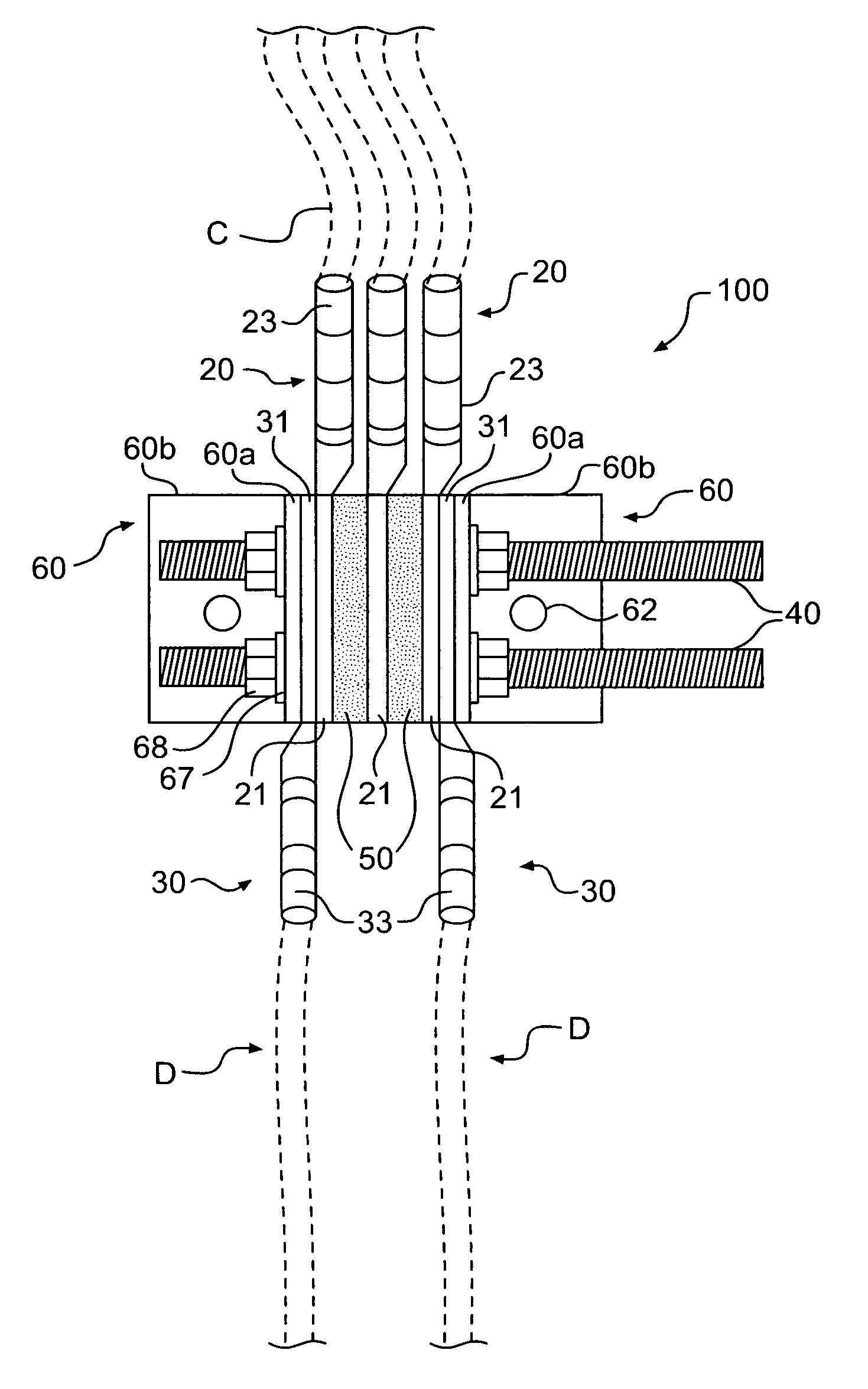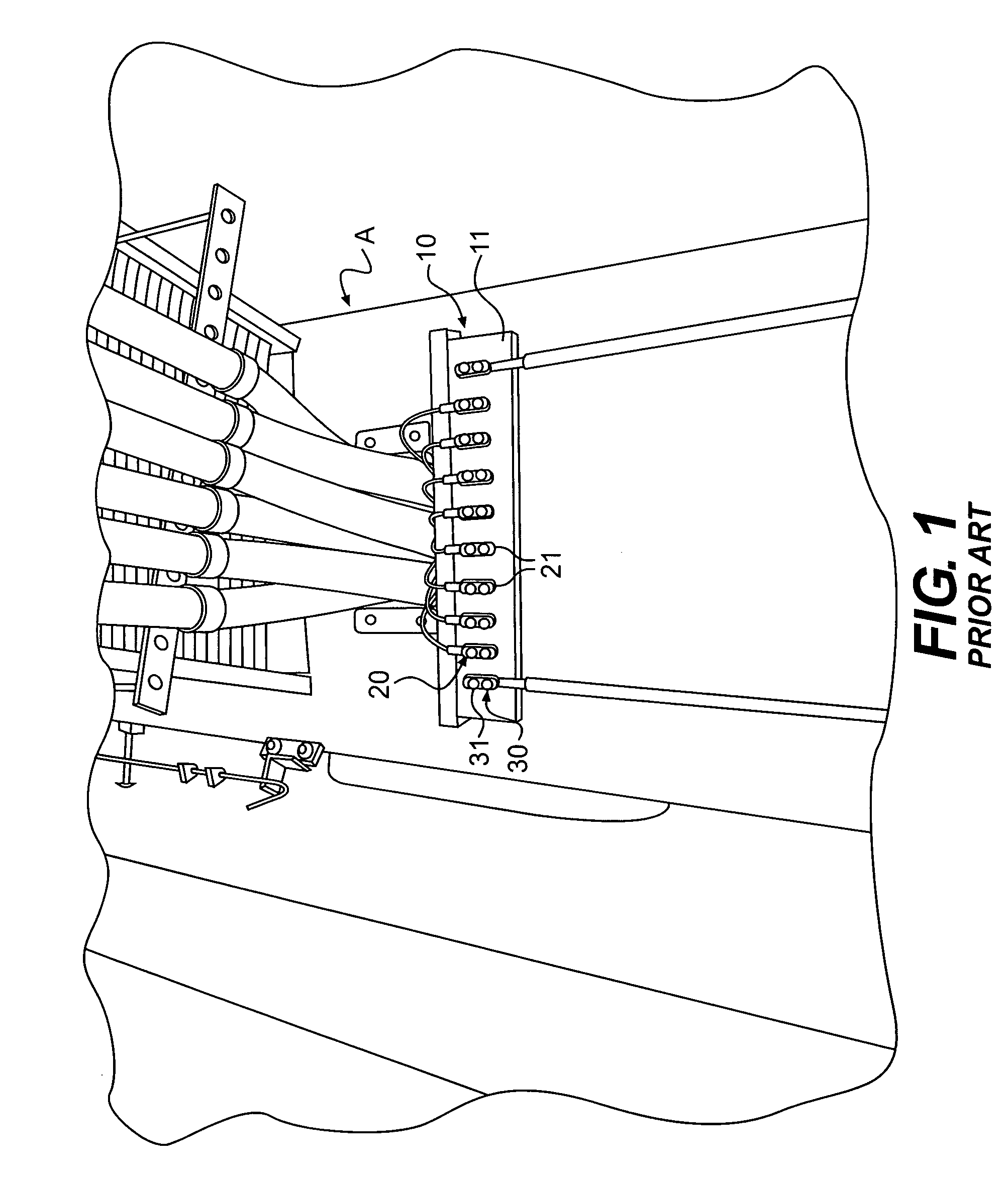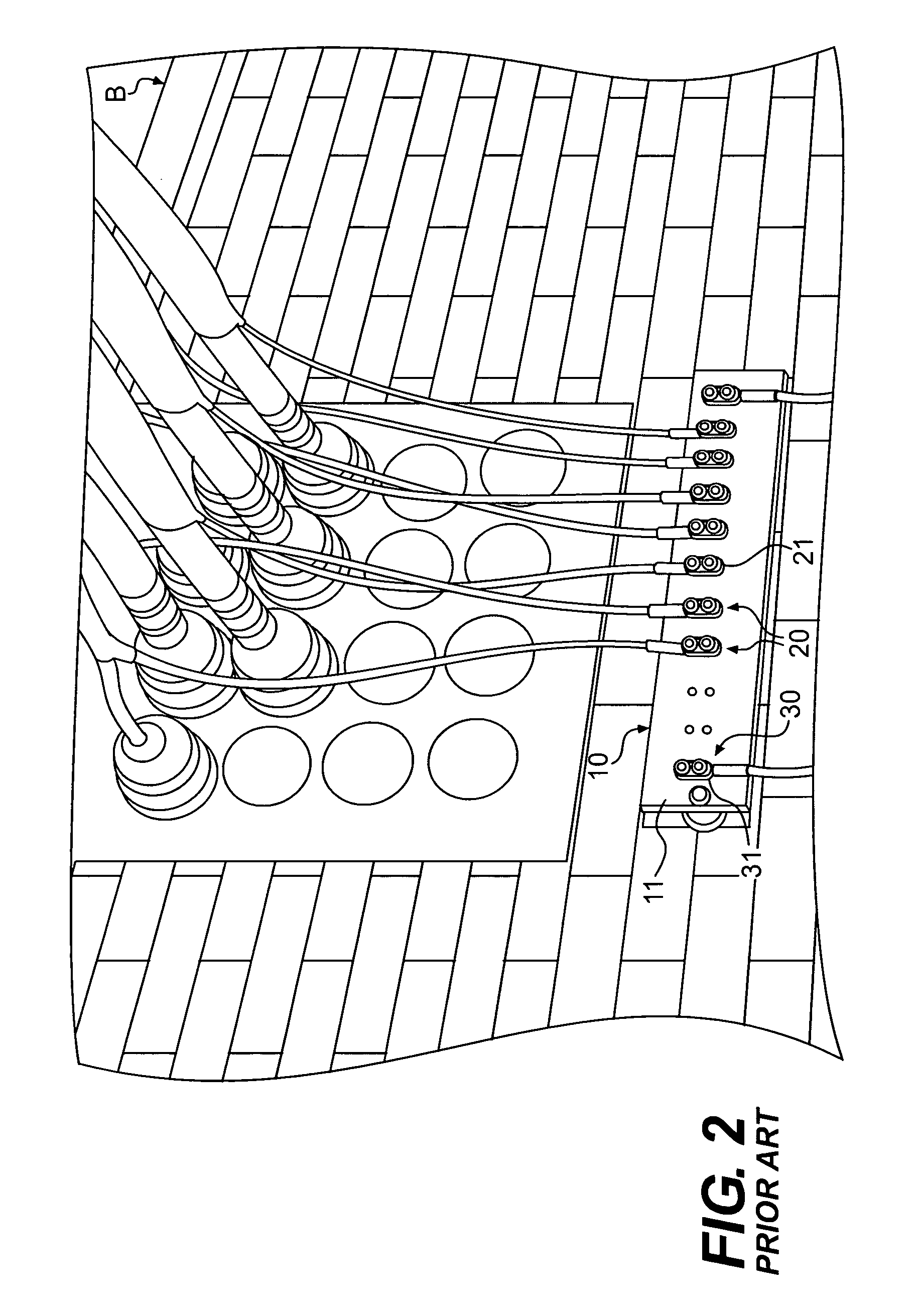Bus bar system, method, and kit
a bus bar and bus system technology, applied in the direction of coupling device connection, coupling protective earth/shielding arrangement, electrical equipment, etc., can solve the problems of increasing the theft of grounding bus bars, increasing the cost of copper, and affecting the use of copper, so as to reduce the use of copper and the effect of less mass per attachment lug
- Summary
- Abstract
- Description
- Claims
- Application Information
AI Technical Summary
Benefits of technology
Problems solved by technology
Method used
Image
Examples
Embodiment Construction
[0027]The present invention is a replacement bus system having one or more shafts supporting attachment lugs and one or more spacers that ride along the conductive shaft; the spacers are conductive and separate the attachment lugs. Although the present invention is not limited to grounding systems, for convenience of description it will be described in the context of a grounding system.
[0028]Wire lugs are terminal conductive electrical connectors; the lugs have a barrel end and a tang end. A terminal section of wire may be stripped to expose the conductor, which can then be crimped within the barrel of the lug, affixing the lug to the wire. The lug tang end includes a flat portion defining one or more bolt stud holes within it.
[0029]Such lugs are commonly used in electrical power or grounding applications. Conventional bus bars 10, as shown affixed to cellular telephone tower A in FIG. 1 and to building B in FIG. 2, support the lugs 20 and 30 in an orientation in which the lug tang ...
PUM
 Login to View More
Login to View More Abstract
Description
Claims
Application Information
 Login to View More
Login to View More - R&D
- Intellectual Property
- Life Sciences
- Materials
- Tech Scout
- Unparalleled Data Quality
- Higher Quality Content
- 60% Fewer Hallucinations
Browse by: Latest US Patents, China's latest patents, Technical Efficacy Thesaurus, Application Domain, Technology Topic, Popular Technical Reports.
© 2025 PatSnap. All rights reserved.Legal|Privacy policy|Modern Slavery Act Transparency Statement|Sitemap|About US| Contact US: help@patsnap.com



